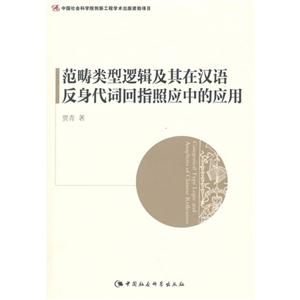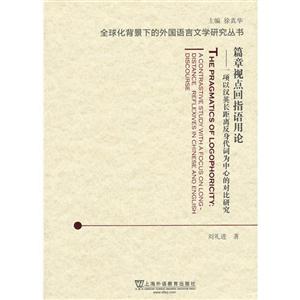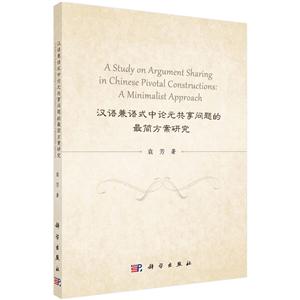
作者:程工
页数:261
出版社:河南大学出版社
出版日期:2004
ISBN:9787810912921
电子书格式:pdf/epub/txt
内容简介
本书以最简方案为理论框架,提出了一个与现有远程反身代词的研究迥然有别的解释性分析。它的体系完备,内容丰富。
作者简介
程工,1963年生,安徽六安人,1981年考入解放军外国语学院,学习英语专业,1985年获学士学位,1998年获硕士学位。1992年考入上海复旦大学外文系,师从徐烈炯教授攻读现代语法理论专业博士学位,1995年获博士学位。现任解放军外国语学院英语教授、博士生导师、科研部部长。主要长事语言结构研究,主持国家社科基金项目、河南省社科基金项目、全军科研规划课题、教育部项目等多项,发表论文30余篇,出版专著2部。
目录
Chapter 1 Introduction
1.0 Preliminary Remarks
1.1 General Framework
1.2 GB and MP Versions
1.3 The Minnimalist View on Variation
1.4 The Standard Binding Theory
1.5 An Outline of the Present Study
1.6 Organization of the Book
Chapter 2 Basic Data
2.0 Preliminary Remarks
2.1 Ziji in Chinese
2.2 [Pronoun+Ziji]Constructions
2.3 Long-distance Reflexives in Other Languages
2.4 Conclusion
Chapter 3 Literature Review
3.0 Preliminary Remarks
3.1 Modifying the Typology of DPs
3.2 The Parameterization Approach
3.3 The LF-movement Analysis
3.4 The Semantic Approach
3.5 Yan Huang’s Pragmatic Theory
3.6 Conclusion
Chapter 4 Properties of Ziji
4.0 Preliminary Remarks
4.1 On the Distinction Between Reflexives and Pronominals
4.2 On the Nature of Ziji
4.3 Zi in Archaic Chinese
4.4 Ji in Archaic Chinese
4.5 A New View on Ziji
4.6 Further Evidence:the Case of Huxiang
4.7 Conclusion
Chapter 5 A Minimalist Account
Chapter 6 Conclusions and Implications
References
后记
1.0 Preliminary Remarks
1.1 General Framework
1.2 GB and MP Versions
1.3 The Minnimalist View on Variation
1.4 The Standard Binding Theory
1.5 An Outline of the Present Study
1.6 Organization of the Book
Chapter 2 Basic Data
2.0 Preliminary Remarks
2.1 Ziji in Chinese
2.2 [Pronoun+Ziji]Constructions
2.3 Long-distance Reflexives in Other Languages
2.4 Conclusion
Chapter 3 Literature Review
3.0 Preliminary Remarks
3.1 Modifying the Typology of DPs
3.2 The Parameterization Approach
3.3 The LF-movement Analysis
3.4 The Semantic Approach
3.5 Yan Huang’s Pragmatic Theory
3.6 Conclusion
Chapter 4 Properties of Ziji
4.0 Preliminary Remarks
4.1 On the Distinction Between Reflexives and Pronominals
4.2 On the Nature of Ziji
4.3 Zi in Archaic Chinese
4.4 Ji in Archaic Chinese
4.5 A New View on Ziji
4.6 Further Evidence:the Case of Huxiang
4.7 Conclusion
Chapter 5 A Minimalist Account
Chapter 6 Conclusions and Implications
References
后记















